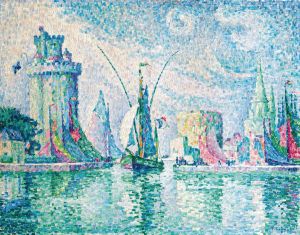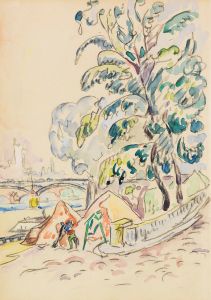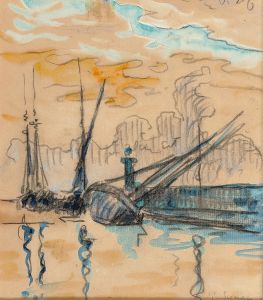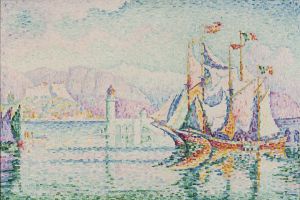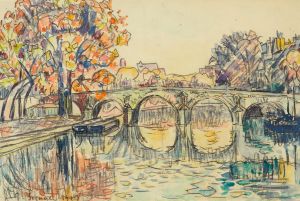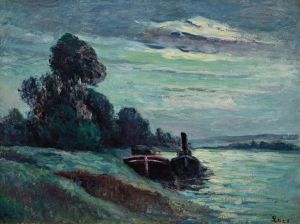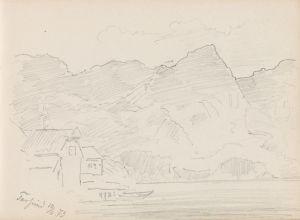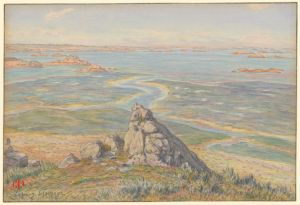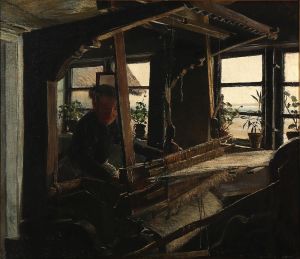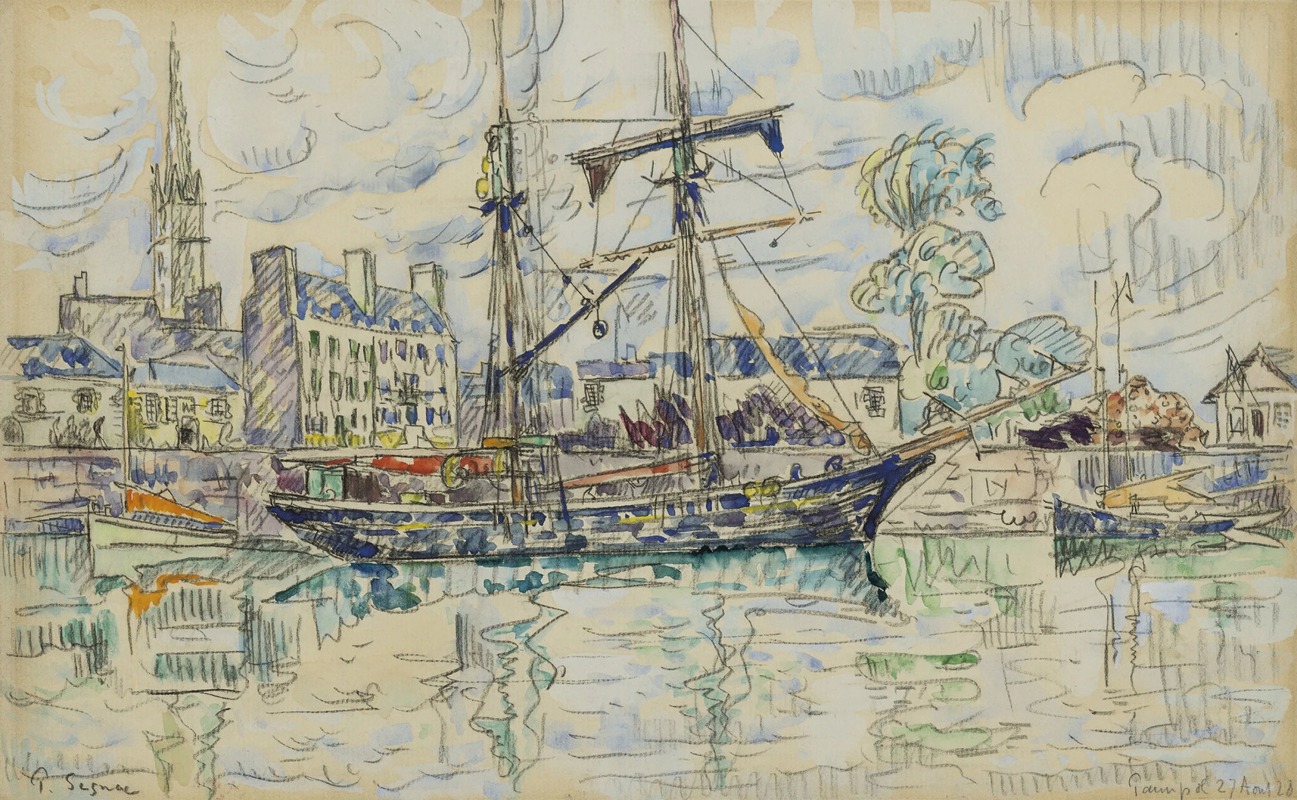
Paimpol
A hand-painted replica of Paul Signac’s masterpiece Paimpol, meticulously crafted by professional artists to capture the true essence of the original. Each piece is created with museum-quality canvas and rare mineral pigments, carefully painted by experienced artists with delicate brushstrokes and rich, layered colors to perfectly recreate the texture of the original artwork. Unlike machine-printed reproductions, this hand-painted version brings the painting to life, infused with the artist’s emotions and skill in every stroke. Whether for personal collection or home decoration, it instantly elevates the artistic atmosphere of any space.
Paul Signac's painting "Paimpol" is a notable work by the French Neo-Impressionist artist, who was a leading figure in the development of the Pointillist technique alongside Georges Seurat. Signac was born in Paris in 1863 and initially pursued architecture before turning to painting. He became a prominent advocate for the Neo-Impressionist movement, which sought to apply scientific principles to the use of color and light in art.
"Paimpol" was created during a period when Signac was deeply engaged with the exploration of color theory and the effects of light. The painting depicts the harbor of Paimpol, a small town in Brittany, France. This region was a frequent subject for Signac, who was captivated by the vibrant coastal landscapes and the interplay of light on water. The painting exemplifies Signac's use of the Pointillist technique, characterized by the application of small, distinct dots of color that blend in the viewer's eye to form a cohesive image.
Signac's approach to painting was heavily influenced by the scientific theories of color and perception that were emerging in the late 19th century. He was particularly inspired by the work of chemist Michel Eugène Chevreul, whose research into color contrast and harmony informed the Neo-Impressionists' use of complementary colors to create luminosity and depth. In "Paimpol," Signac employs a palette of bright, contrasting colors to capture the dynamic atmosphere of the harbor, with its bustling boats and shimmering water.
The painting reflects Signac's interest in maritime subjects, which he explored extensively throughout his career. His fascination with the sea was not only aesthetic but also personal; he was an avid sailor and often painted scenes from his travels along the French coast and the Mediterranean. "Paimpol" is a testament to Signac's ability to convey the vitality and movement of the sea through his meticulous technique and vibrant color choices.
Signac's contribution to the Neo-Impressionist movement was significant, as he helped to popularize the Pointillist technique and expand its theoretical foundations. His writings, including the influential book "From Eugène Delacroix to Neo-Impressionism," articulated the principles of the movement and inspired a generation of artists to experiment with color and form. "Paimpol" is an example of Signac's mature style, showcasing his mastery of Pointillism and his commitment to capturing the essence of his subjects through color and light.
Today, Paul Signac's works, including "Paimpol," are celebrated for their innovative use of color and their role in the evolution of modern art. His paintings are held in major collections around the world, and his influence can be seen in the work of later artists who continued to explore the possibilities of color and abstraction. "Paimpol" remains a vibrant example of Signac's artistic vision and his contribution to the Neo-Impressionist movement.






